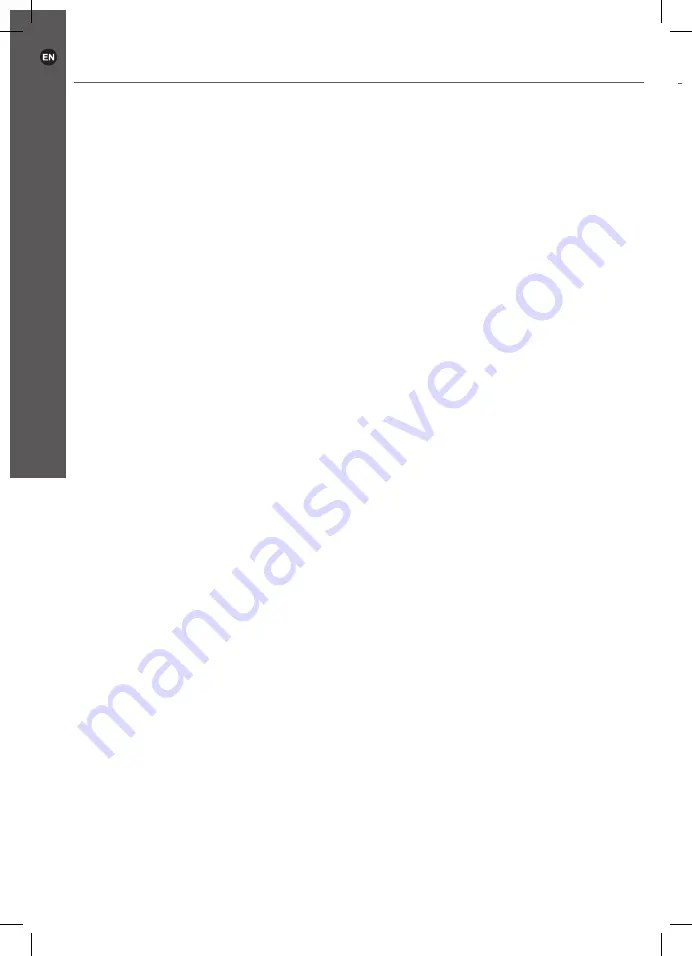
6
FPLMP138
FPLMP138
Getting
Started . . .
4. Never store the product with petrol in the tank inside a building where fumes can
reach an open flame or spark.
5. To reduce the fire hazard, keep the engine, silencer and petrol storage area free of
vegetative material and excessive grease.
6. Allow the engine to cool before storing in any enclosure.
7. Check the grass catcher frequently for wear or deterioration.
8. If the fuel tank has to be drained, this should be done outdoors.
9. Wear protective gloves when removing and re-assembling the cutting means.
10. Replace worn or damaged parts for safety. Only use replacement blades and spare
parts recommended by the manufacturer.
11. Ensure that only replacement cutting means of the right type are used.
Fuel handling
1. Before refuelling, stop the engine, disconnect the spark plug connector and let the
product cool. Fuel and fuel vapour are highly flammable. Take care when handling
fuel. Never smoke when you are refuelling the product. Do not refuel the product, if
there is an open fire in the vicinity!
2. Always use suitable aids such as funnels and filler necks. Do not spill any fuel on the
product or its exhaust system. There is a risk of ignition. Remove spilt fuel carefully
from all parts of the product. Any residue which may be present must be completely
removed before the product is operated!
3. Fuel fumes can ignite. Never use the product in environments where there is a risk
of explosion.
4. Petrol engines produce toxic carbon monoxide exhaust fumes. Breathing carbon
monoxide can cause nausea, fainting or even death.
5. Never breathe in any fuel fumes, when you are refuelling the product. Never fill
the fuel tank in enclosed spaces, such as basements or sheds. There is a risk of
poisoning and explosion!
6. Avoid skin contact with petrol.
7. Do not eat or drink, while you are refuelling the product. If you have swallowed petrol
or oil, or if petrol or oil has got into your eyes, then seek medical advice immediately.
8. Close the fuel tank cap immediately after filling the fuel tank. Make sure that it is
properly closed.
9. Never use the product without an air filter.
10. Fuel vapour pressure may build up inside the fuel tank depending on the fuel used,
weather conditions and the venting system. To reduce the risk of burns and other
personal injuries, remove the fuel tank cap carefully to allow any pressure build-up
to release slowly.
11. Be aware of fire risks, explosion and inhalation risks.
12. Do not smoke while operating the product, handling fuel or near fuel.
13. Ensure the spark plug connector is securely attached. A loose connector may cause
electrical arcing that could ignite combustible fumes and cause a fire or explosion.
14. Check regularly for leaks from the fuel tank cap and fuel lines.
15. Tighten the fuel tank cap thoroughly after refilling the fuel tank.
16. Do not operate the product if it is leaking fuel. Do not remove the fuel tank cap while
the engine is running.
17. Use caution when handling fuel. To avoid any accidental fires, move the product at
least
3
metres from the fuelling point before starting the engine.
18. Do not store containers filled with fuel or refill the fuel tank in any place where there
is a boiler, stove, wood fire, electrical sparks, welding sparks, or other sources of
heat or fire which might ignite the fuel.
19. If any fuel spillage occurs during refuelling, use a dry rag to wipe spills and allow
remaining fuel to evaporate before starting the engine again.
20. If you have spilt fuel on yourself or on your clothes, change your clothes and wash any
part of your body that has come in contact with fuel before starting the engine again.
21. If fuel is ignited, put out the fire with a dry powder fire extinguisher.
22. Store fuel in containers specifically designed for this purpose.
Vibration and noise reduction
To reduce the impact of noise and vibration emission, limit the time of operation, use low-
vibration and low-noise operating modes as well as wear personal protective equipment.
Take the following points into account to minimise the vibration and noise exposure risks:
1. Only use the product as intended by its design and these instructions.
2. Ensure that the product is in good condition and well maintained.
3. Use correct attachments for the product and ensure they in good condition.
4. Keep a tight grip on the handles/gripping surfaces.
5. Maintain this product in accordance with these instructions and keep it well lubricated
(where appropriate).
6. Plan your work schedule to spread any high vibration tool use across a longer period
of time.
Safety information
3663602423287-GB-V04.indd 6
27/9/2018 14:54







































